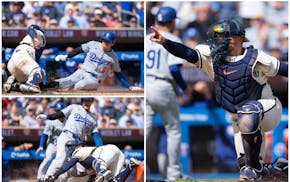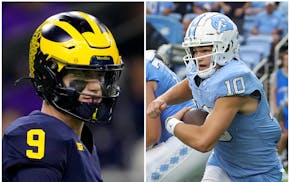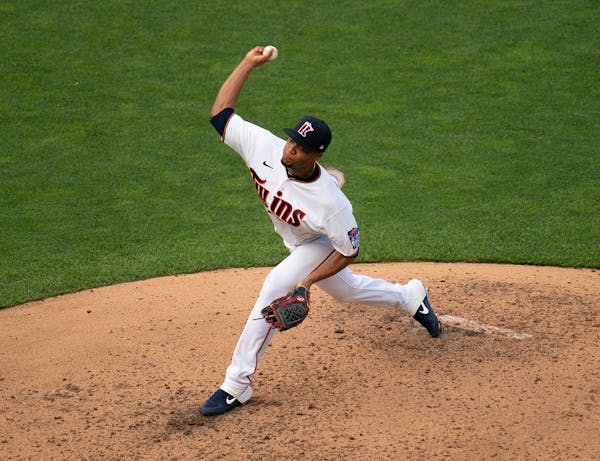My first live sporting event since February felt wonderfully familiar and uniquely different. The new normal was not hard to recognize.
Hand sanitizer dispensers are positioned a few steps inside the main entrance to Canterbury Park. Fans arriving to watch horse racing also must have their temperature taken before entering, either on an automated machine or by an employee using a handheld thermometer.
Next, fans receive a wristband of a specific color that designates where they are permitted to view races. This allows track officials to maintain capacity in each section compliant with social distancing requirements.
Bathroom break? Signs hang above urinals that are no longer in use, so guys aren't standing shoulder to shoulder anymore.
Sports are in the process of returning to business. The pandemic is creating complications across all leagues, with positive tests among athletes and surges in the general population providing a reminder of how challenging the return to play will be inside a bubble or not.
But let's assume that sports get off the ground and — as hard as this might be to envision at present — that fans eventually are allowed back to watch in person.
Canterbury is providing a template for how that might look and operate: Reduced capacity. Temperature checks and mask requirements. Signs promoting social distancing.
"You need to have really clear communication with both your team and guests as to what your standards and expectations are," said John Groen, Canterbury's vice president of marketing, who serves as chairman of the COVID-19 leadership team. "And you have to be willing to enforce those expectations right from the start. The longer you allow things to slide, you won't be able to get control again."
It seems inevitable that many of Canterbury's protocols will become standard policy elsewhere. There are 70 hand sanitizer stations throughout the building. Plexiglass partitions separate service transactions.
A camera mounted to the ceiling at the track entrance can detect elevated temperatures, providing a second layer of monitoring in addition to scans done at the door. Fans showing fever are not allowed to enter.
Spectators previously could wander the complex. Now, tickets have designed seating areas to limit capacity. Track officials try to prevent fans from roaming, especially on busy days. Groen even had to remind his dad to stay in his assigned area one night.
"It's a learning curve for everyone," Groen said.
Canterbury recorded crowds of 20,000 on certain days in recent years, with a daily average of 6,600 last summer. They had their first "sellout" this season Thursday with 1,100 fans. Groen had to turn fans away at the door, which never happened pre-pandemic.
"It's fun to say we're sold out," Groen said, "but it is a different model than in the past."
The atmosphere is different too, for obvious reasons. Fewer fans, less noise. Not the usual roar as horses reach the homestretch. The club levels are mostly quiet and orderly between races, though wagering has been robust so far.
"You don't realize how much the atmosphere changes with a tenth of the crowd," Groen said.
He's not complaining. One-tenth sure beats the alternative of having no fans. And that is what Canterbury officials hope to preserve by requiring fans to wear masks everywhere except when they are seated. The track sells masks for $1 for those who don't bring one.
Masks have spiraled into a contentious national debate, sadly, with a segment of folks refusing to wear them. That has led to some "tough conversations" at Canterbury, said Groen, who calls the mask policy the track's biggest challenge.
"The reality is, our No. 1 goal is to provide a safe environment for our fans and our team and to be able to stay open," he said. "These measures we put in place are there for a reason."
Mask rules will be a nightmare for sports teams because some people simply refuse to comply. There will be fights in stadiums over it. Guaranteed.
Canterbury is constantly modifying its policies after seeing what works and what doesn't. Sports fans can expect to see many of those protocols at other venues whenever they reopen. Mask requirements. Temperature checks. Capacity limits to help social distancing.
In other words, minor inconveniences as a trade-off to being able to watch sports in person again.
chip.scoggins@startribune.com
Scoggins: Why 'championship or bust' fits these Wolves

Scoggins: Anatomy of a game-saving play as Correa throws out Ohtani

Scoggins: McCarthy or Maye? Ex-U coach breaks down Vikings' options
Scoggins: Cory Provus getting ready for 'biggest challenge' of career


